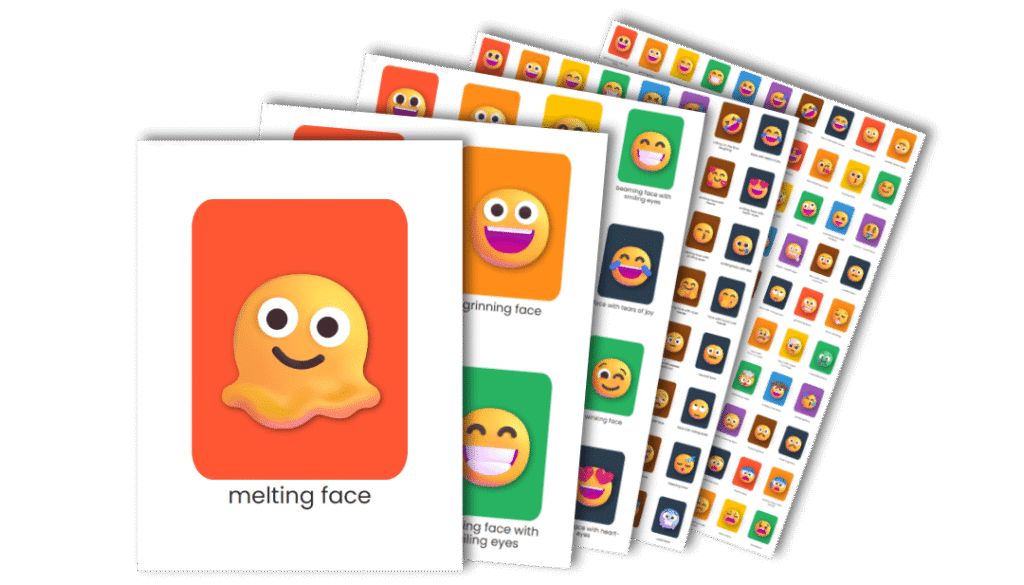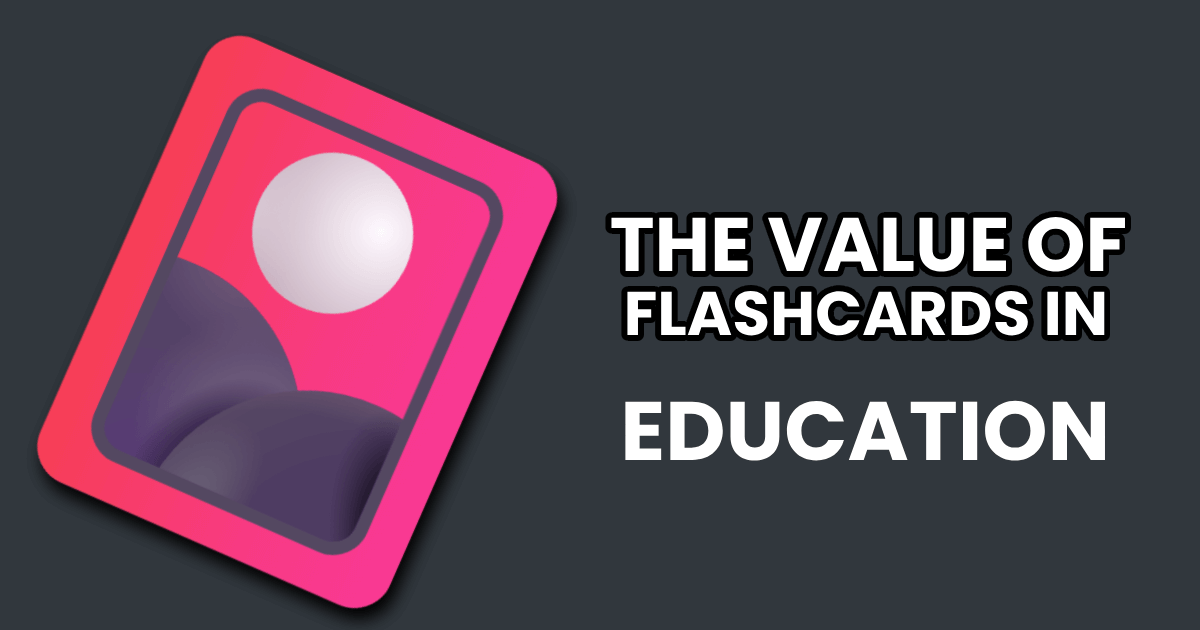The value of flashcards in education lies not in nostalgia, but in their proven ability to enhance learning across age groups, settings, and neurotypes. Though they might look simple, flashcards are backed by research in memory science and offer versatility that even high-tech solutions can’t replicate. They’re used in early learning, special education, language acquisition, and exam prep for one very good reason: they work. By targeting core cognitive functions like active recall and spaced repetition, flashcards help transform surface-level exposure into deep, retained knowledge. They’re also flexible enough to support creative tasks, visual scheduling, and differentiated learning. In this article, we explore the full value of flashcards in education, including their scientific basis, practical applications, and growing role in inclusive classrooms.
🧠 The Science Behind the Value of Flashcards in Education
At the core of the value of flashcards in education is the principle of active recall. This refers to the mental process of retrieving an answer from memory, as opposed to simply recognising it. Flashcards compel learners to generate information on demand, which significantly strengthens memory pathways. Research from the Learning Scientists and others has consistently demonstrated that active recall yields much better long-term retention than passive review methods. Whether it’s a child remembering the word “elephant” or a student reciting a biology definition, the act of remembering—rather than re-reading—cements the knowledge more deeply.
Closely tied to this is spaced repetition, a technique that involves reviewing information at increasing intervals to counteract the natural “forgetting curve.” First described by German psychologist Hermann Ebbinghaus (source), this method is now embedded in modern flashcard apps like Anki and Quizlet. But you don’t need software to apply the principle—manual flashcard rotation achieves the same effect. When used strategically, flashcards reinforce information just before it’s forgotten, making learning more efficient and durable.

Flashcards also help manage cognitive load. By isolating one concept per card, they simplify complex material and reduce the chances of mental overload. This makes them particularly useful for learners who struggle with attention, working memory, or processing speed. The format strips away distraction, offering focused, bite-sized learning that supports mental clarity without sacrificing depth. The value of flashcards in education is rooted not just in what they present, but in how they present it—one clear idea at a time.
🏫 Practical Applications of Flashcards in Education
Flashcards are incredibly versatile in educational settings, from preschool through to secondary school. In early years education, they’re often used to teach foundational vocabulary such as animals, colours, shapes, and numbers. Cards with clear images or emojis can introduce children to language and categorisation in an engaging, tactile way. Activities might include naming games, matching, sorting, or storytelling prompts. The combination of visual and verbal input supports dual coding—a memory-boosting process where learners store information in both visual and linguistic form.
In primary and secondary classrooms, flashcards remain invaluable. Teachers use them to reinforce sight words, multiplication tables, scientific vocabulary, historical facts, and foreign language terms. A flashcard asking “What’s 7 x 8?” or “What is the capital of Spain?” is more than a quiz—it’s a retrieval opportunity. Because flashcards are modular and easy to customise, educators can adapt them to any curriculum or learning goal. They also make excellent revision tools and allow for scaffolded instruction based on student ability.
The value of flashcards in education is even more pronounced in special educational needs (SEN) and autism support contexts. Many neurodivergent learners benefit from visual structure and predictability, both of which flashcards provide. Cards showing facial expressions can aid emotion recognition; routine cards can help with daily transitions; and symbol-based communication systems like PECS rely entirely on flashcard-style visuals. For some children, flashcards aren’t just supplementary—they’re essential tools for comprehension and communication.
👁️🗨️ The Multisensory Value of Flashcards in Education
One of the most compelling arguments for the value of flashcards in education is their ability to support multisensory learning. Flashcards engage visual learners through imagery and text, especially when emojis or stylised icons are included. When a child sees 🐘 next to the word “elephant,” they’re forming dual memory traces—visual and verbal—that reinforce one another. This supports the dual coding theory, which posits that learners retain information better when it’s processed in multiple ways.
Flashcards also appeal to kinesthetic learners through physical interaction. Flipping, sorting, and matching cards provide hands-on engagement that anchors abstract knowledge in motion. This tactile element is especially important in early education and SEN environments, where movement can aid focus and retention. Unlike digital-only tools, physical flashcards invite students to manipulate their learning materials, fostering a deeper connection to the content.
Even auditory reinforcement can be layered into flashcard use. Teachers might pronounce the word on the card aloud, or students may verbalise their answers. In speech therapy or ESL settings, this turns flashcard sessions into multisensory feedback loops—visual, auditory, and tactile—all working together. This approach transforms flashcards from static prompts into dynamic learning experiences.
♿ Flashcards for Inclusion, Differentiation, and Learner Agency
The value of flashcards in education is also tied to their role in inclusive and differentiated learning environments. A single set of flashcards can be used across different ability levels by adjusting how the content is approached. Beginners may simply name what they see, while more advanced learners can use cards as sentence prompts or discussion starters. This layered usability means flashcards are ideal for mixed-ability classrooms.
Flashcards also promote learner agency. In SEN settings, where some children may be non-verbal or require structured choices, flashcards offer a way to engage independently. Learners can interact with the material at their own pace, building confidence and autonomy. This kind of empowerment is often hard to achieve with traditional text-based resources or group instruction.
Customisation is another key strength. Tools like EZC allow teachers and parents to generate emoji-based flashcards that reflect a learner’s interests, preferences, and specific needs. Whether the goal is to build emotional vocabulary or support transitions through a visual schedule, flashcards can be tailored without complex tools or expensive subscriptions.
✅ Flashcards as Assessment and Revision Tools
Flashcards aren’t just teaching aids—they also serve as effective assessment tools. Teachers can use them informally to check comprehension during or after a lesson. For example, showing a card that says “2 + 2 = ?” lets an educator instantly gauge whether the student understands the concept without needing a written test. These quick-check moments support formative assessment, offering feedback and guidance in real time.
Flashcards also encourage self-assessment and peer learning. Students can quiz themselves, quiz each other, or group cards into “I know this” and “I need more practice” piles. This kind of self-directed sorting fosters metacognitive awareness—learners become more aware of what they know and where they’re struggling. It’s a powerful technique that builds ownership over learning.
For revision, flashcards are unbeatable. They allow for short, repeatable sessions that target specific knowledge gaps. Unlike worksheets or long reading passages, flashcards are ideal for quick reviews and mobile learning. Whether it’s a GCSE student reviewing terms on the bus or a parent practising with their child at breakfast, the format adapts to the learner’s lifestyle.
🛠️ Creating Flashcards That Maximise Educational Value
To get the most out of flashcards, design matters. Each card should focus on a single concept, use clear fonts and colours, and feature high-contrast images where possible. For SEN learners, especially those with dyslexia or visual processing challenges, clarity is essential. Use simple layouts, sans-serif fonts, and strong colour contrast to aid legibility. Avoid over-decorated cards that may distract from the core content.
Both physical and digital flashcards have their place. Physical cards are tactile, easy to manipulate, and ideal for group activities. Digital flashcards are scalable, searchable, and often incorporate spaced repetition algorithms. A hybrid approach—where printed cards are created from a digital source like EZC—offers the best of both worlds. With tools like EZC, users can create high-quality emoji-based flashcards for printing or screen use in minutes.
🎨 Creative Ways to Use Flashcards Beyond Memorisation
The value of flashcards in education isn’t limited to factual recall. Flashcards can also spark creativity, storytelling, and critical thinking. In language classrooms, learners can build sentences or entire narratives from a handful of image-based cards. This turns passive vocabulary into active language use and encourages imaginative expression.
Flashcards also support categorisation and logic games. Students can sort cards into groups—animals vs. food, happy vs. sad, big vs. small—developing classification skills along the way. These activities help with executive function, pattern recognition, and semantic understanding. Even older learners benefit from these tasks, particularly in SEN environments where categorisation supports cognitive development.
For schools and families, flashcards serve as a bridge between classroom and home. A pack of printable flashcards with instructions can reinforce lessons and give parents an easy way to support learning without screens. They’re low-tech, low-cost, and universally accessible—making them ideal for equitable education.
📌 Conclusion
The value of flashcards in education comes from their simplicity, adaptability, and alignment with how the brain actually learns. Whether you’re helping a child recognise emotions, supporting a student with revision, or engaging a non-verbal learner in a meaningful task, flashcards deliver results. They’re not just memory tools—they’re bridges to understanding, expression, and independence. In a digital age overflowing with apps and distractions, flashcards remind us that sometimes, the best learning tools fit in the palm of your hand.

